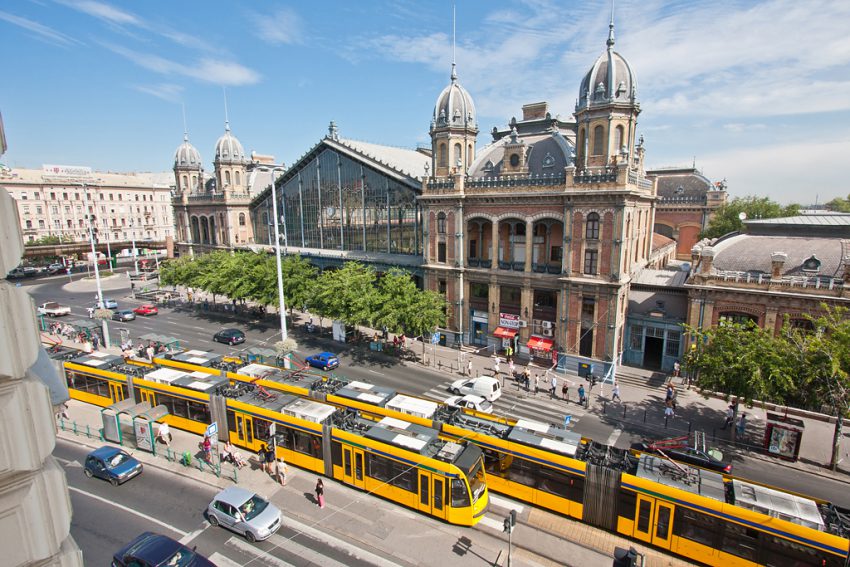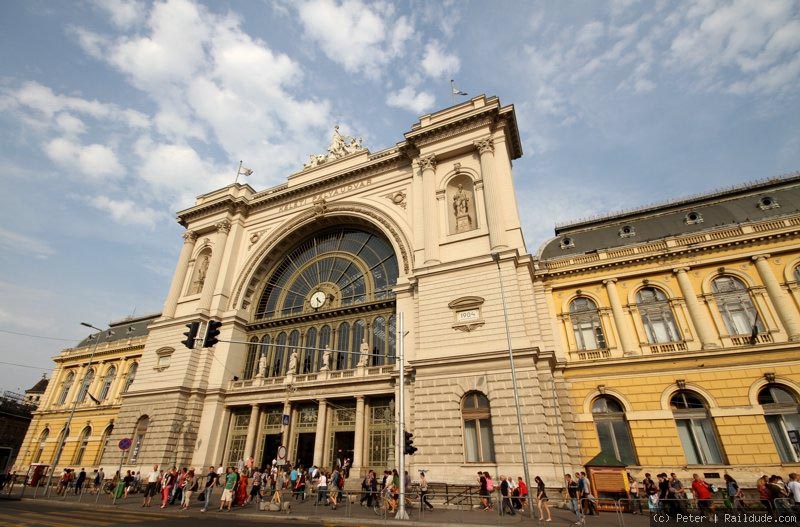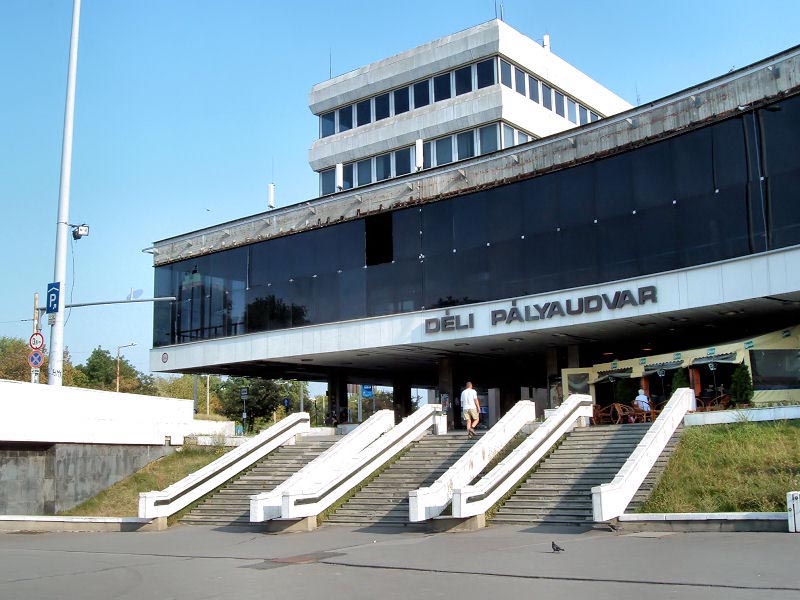Until the invention of the airplane and the arrival of airports, it was the duty of railway stations to give visitors a great first impression of their city. Railway stations began to pop up everywhere from the 1860s onwards, from small towns to big cities, built in parallel to railway construction. In this month’s Budapest Uncovered, we’ll take a look at two historic, and two modern structures of Hungarian railway history.
The transportation revolution of the 19th century reached Hungary only 6 years after France opened the Saint Etienne-Lyon line: the first law regarding railway development and rail vehicle manufacturing was passed in 1836, containing a list of 13 Hungarian railway line plans. The first one was opened between Vác and Pest on 15 July 1846, giving way to a 2,279 km long railway network by the time of the Austro-Hungarian Compromise of 1867, and rapid modernization all across the country.
Nyugati Railway Station

Planned by August de Serres, and constructed in the span of three years by the Eiffel Company, Nyugati was opened for traffic on 28 October 1877. Its marvellous iron-and-glass facade overlooks one of the major intersections of the Grand Boulevard, and hides a 25,000 square meters large, 146 meters long, 25 meters high platform hall. Besides witnessing the introduction of Siemens & Halske’s modern switching system in 1881, and the trial journeys of Kálmán Kandó’s phase-changing electric locomotives, Nyugati also served as the location for one of the most picturesque railway accidents: during a reversing, ten carriages became detached from a train, crashed through the waiting hall’s glass walls, and landed on the Grand Boulevard, injuring an elderly woman.
If you step inside the once-imposing waiting hall, what you’ll notice first is how grimy and unkept everything looks: as one journalist writing for the Economist put it, “it’s like seeing a countess begging in the gutter”. You will only really understand the meaning of this apt description if you visit the gorgeously decorated Royal Waiting Hall, built for Emperor Franz Joseph and his wife Queen Sissi. The opulent room, whose entrance is hallmarked by the words “Viribus Unitis”, the motto of the Emperor, can only be viewed as part of a group tour, or during the special events of MÁV Nostalgia. As most other railway stations in the country, Nyugati could also use a long-awaited overhaul: it’s surreal that the tidiest and most graceful section of the railway station is a McDonald’s restaurant.
Keleti Railway Station

Designed by Gyula Rochlitz and János Feketeházy, the man who gave us the magnificent Liberty Bridge, Keleti Railway Station was completed in 1884 after a three-year construction process. The eclectic style building was one of the most up-to-date railway stations of its time in Europe, with a 42-meter wide steel-frame reception hall, 5 platforms (today there are four tracks inside the hall, and eight outside), and the statues of James Watt and George Stephenson pinned to the 43-meter tall main facade. Despite its name (Keleti means eastern), the station only serves westbound trains, and is Budapest’s main international railway terminal.
Déli Railway Station

Located in Buda’s Krisztinaváros neighbourhood, Déli is the second busiest railway terminal in the country after Keleti, serving primarily the towns and cities of Transdanubia. It was first opened in 1861 with only a few tracks and a wooden waiting hall. As railway traffic on the line grew, so did the size of the terminal: by the 1870s a huge, two-storey stone building was erected here. Everything went smooth for Déli in the coming decades, until WWII came along and damaged the terminal so heavily that there was no alternative but to raze it to the ground. The new, glass and concrete terminal was designed in modern style by György Kővári and was completed in 1975. Opinions about the building differ, but everyone agrees that Déli is in a dire need of reconstruction.
Kelenföld Railway Station

Kelenföld is the odd-one-out of our compilation: it’s not a terminal, but as it’s the fourth busiest railway station of the city, we couldn’t disregard it. It was opened concurrently with Déli, by the same company (the Southern Railways), in 1861. Déli and Kelenföld are connected by a 361 meters long tunnel that’s carved into the belly of Gellért Hill. The historicizing station building dates from 1884, and is under monument protection – maybe that explains why it’s in such an awful state. Since 2014 Kelenföld has been connected to downtown Budapest by the M4 metro line: during the line’s construction works, the railway station was extended by new platforms, coupled with escalators and elevators, as well as a shiny new underpass with ticket machines, free WIFI, bicycle storage, and shops, which resulted in the new platform overtaking the railway station role from the main building.